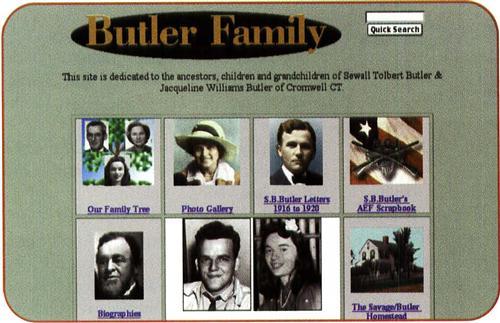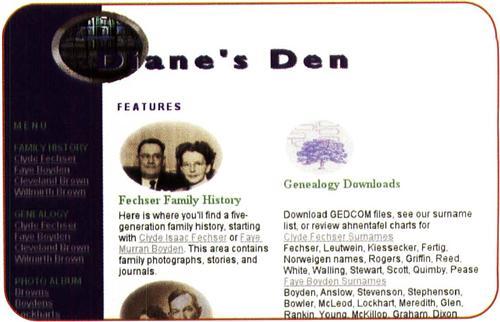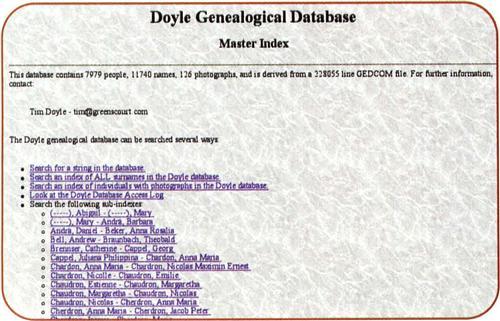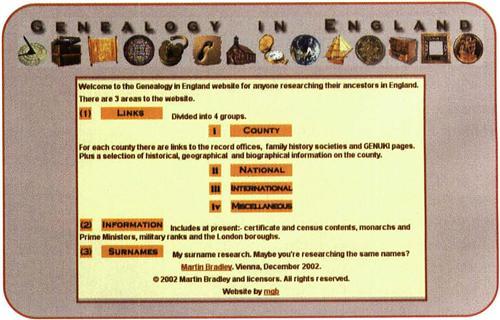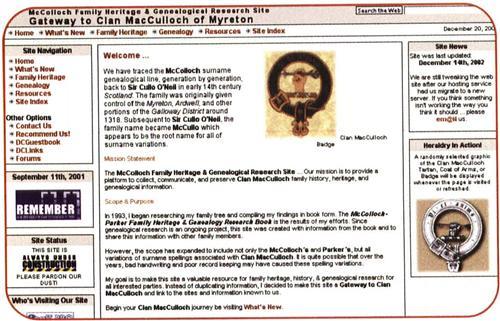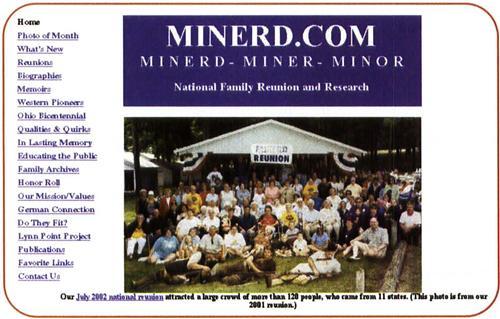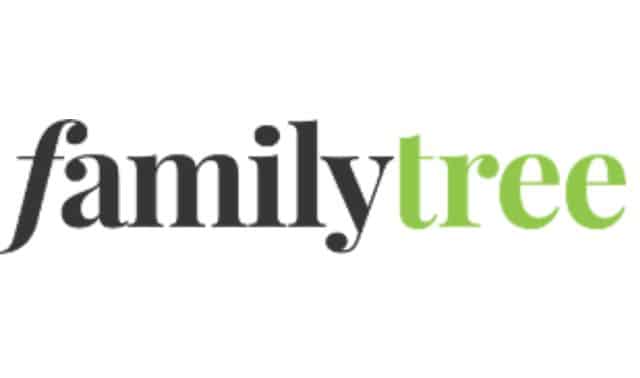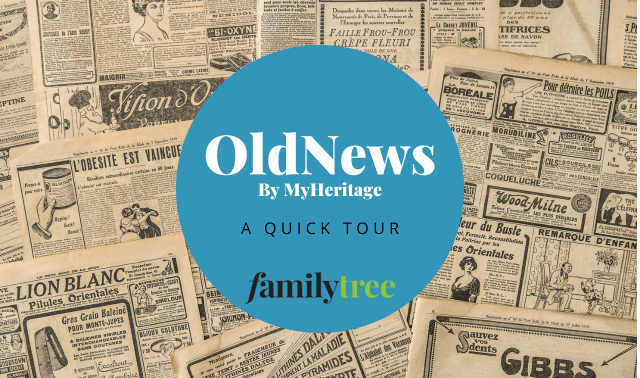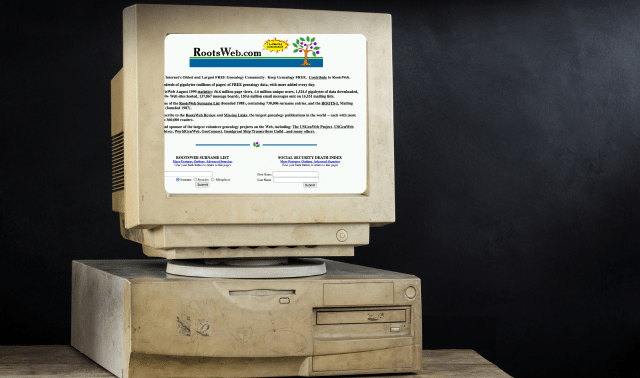Before the Internet, sharing the fruits of all your hard genealogical work with relatives and fellow researchers meant lugging pedigree charts to family reunions, printing books, photocopying and even using something called a mimeograph. If you wanted to show your family tree to someone across the country, you needed plenty of postage stamps. Today, however, you can post pedigrees online for free, for others to access in the blink of a modem.
Personal genealogy pages have sprouted faster than you can Google for Poindexter family history. Homegrown sites have helped make genealogy the second-most-popular topic on the Web, behind only pornography.
But just like porn sites (presumably), there are good homemade genealogy sites and there are bad ones. Since bad sites make it harder for the rest of us to share the results of the creators’ research, we thought we’d see what could be learned from the good personal genealogy Web sites. From the best sites, in fact — 10 of them, selected by scouring the Web until our eyes ached and our mouse-clicking fingers cramped.
DIY dos and don’ts
As we searched for stellar family tree sites, we were reminded of some Web-design dos and don’ts. Whether you’re planning your first site or remodeling an existing home on the Web, keep these tips in mind:
• Do include a title for your Web site, a mission statement or paragraph outlining the site’s content, links to your main categories and contact information. If visitors know a little background about your research and what information you’ve made available from your family history findings, it piques their interest in browsing your site and gives them some direction in their search. They might discover you share a common ancestor! You also want visitors to be able to contact you in case they too have research information about your family line. Including a link to your e-mail address on the home page and the subsequent pages seems to be the most common approach used by successful Webmasters.
• Do organize your site in an easy-to-navi-gate manner that will guide visitors rather than confuse them. Clean, uncluttered page design always works best. Provide a link to the home page on each page of your Web site, too. Remember that not every visitor will enter your site via the home page.
• Do make sure your links work. Personal Web sites are works in progress. Every link may not be active, but the ones that are should connect to the proper pages. Nothing frustrates Web surfers more than being unable to access the information they click on.
• Don’t design a circus. Putting together a personal Web site allows you to be creative. The computer screen is your canvas. But refrain from posting animated icons and musical sound bites that play continuously. Sure, you want your genealogy Web site to stand out. You want visitors to recognize the hard work and creative thought you’ve put into each page. But sometimes less is more. A Scottish roots site can show ethnic pride without a plaid background that makes it impossible to read the text on top. If your home page has a Southern theme, a repeating rendition of “Dueling Banjos” will likely repel more visitors than it entertains. Dancing trees aren’t a requirement for a visually appealing family site — they’ll only detract from the family history data you’re trying to showcase.
• Do keep it simple. Use easy-to-read fonts that stand out from your background. Cursive or blocky typefaces are often hard to read, and italics should be used sparingly.
• Do keep photographs small to minimize download times; you can use thumbnails, linked to larger versions of the images, to efficiently present a gallery of pictures.
• Don’t overload your home page, but make it a welcoming gateway to the rest of the information your site holds.
Finally, before your Web site goes “live,” look at it on other computers. Appearance varies by browser (Netscape, Internet Explorer or AOL), operating system (Mac or PC) and monitor size. Just because you have the latest and greatest computer on the market and a cable modem doesn’t mean your fellow family historians do. Keep those older computers and pokey dial-up connections in mind when designing your site.
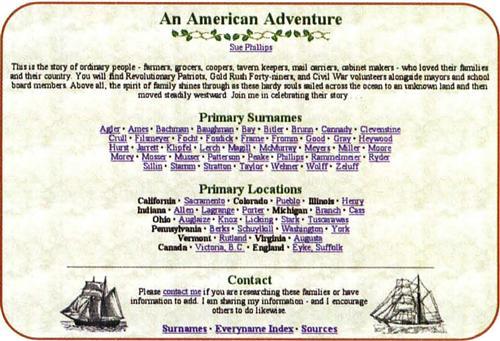
AN AMERICAN ADVENTURE
<www.phillipsplace.net/genealogy>
An American Adventure is a good example of a themed Web site. It earns creativity points for its unusual title, as well. The Webmaster explains the theme up front on the home page: “This is the story of ordinary people — farmers, grocers, coopers, tavern keepers, mail carriers, cabinetmakers — who loved their families and their country. You will find Revolutionary patriots, Gold Rush forty-niners and Civil War volunteers alongside mayors and school board members. Above all, the spirit of family shines through as these hardy souls sailed across the ocean to an unknown land and then moved steadily westward. Join me in celebrating their story.”
The site displays good organization by dividing information into surname and location categories. Clicking on a place name in the Primary Locations category opens a page listing the people who lived there. Visitors can click on each person in the Primary Surnames category to learn the ancestor’s spouse, children and birth and death dates. Primary Surnames offers details about the most well-researched ancestors; to access information on every surname featured on the Web site (not just the primary names), click the Everyname Index. If you’ve discovered a common ancestor, the Webmaster makes contacting her easy — e-mail links are at the top and bottom of the home page.
BUTLER FAMILY OF CROMWELL, CONNECTICUT
The Butler Family Web site is one of the most visually stimulating and attractive examples presented here. On the home page, the arrangement and size of the photos are just right. When linking to the family tree, visitors are in for a treat — a pictorial version of this common chart. A photo, rather than a name and date, denotes an ancestor’s position on the tree. Click on a picture and access a page with family information. More family pictures abound when you enter the Photo Gallery. Images of generations of the Butler family, gatherings and activities lend a scrapbook feel to this part of the site.
The content excels as much as the design: It adds a human element to the genealogical nuts and bolts with links to biographies, letters, family birthdays and artwork. The Family Letters section contains 19th- and early 20th-century missives penned by Butler ancestors. In the What’s New section, visitors and family members can track the changes and additions made to the site. The page also serves as a sort of archive documenting the progress the Butlers have made in expanding the Web site.
The elements of the Butler Family Web site highlighted here only begin to touch the surface. Browse its contents for a sense of the scope and type of available information, and for a wealth of ideas for your own site.
DIANE’S DEN
<members.tripod.com/dianewhittaker>
This Web site subscribes to the “less is more” philosophy, and it works. The home page is well-organized and easy to navigate. Visitors know right away that they’ll be able to access family history and genealogy information for Clyde Fechser, Faye Boyden, Cleveland Brown, Willmirth Brown and their descendants.
The family history pages open a visual family tree for each primary ancestor. This section humanizes the ancestors represented — you can click on a surname or photograph to view details about each one, and read a brief story that describes the person’s occupation, family life and migration.
The genealogy pages have more of a database quality and aren’t as visually appealing. Search this section for the facts, without all the pictures. Each genealogy page for a primary ancestor has an Ancestors link that lists basic facts about each generation. If you find info you want, the Genealogy Downloads option lets you grab GEDCOM files and view surname lists or ahnentafel charts.
The next stop on the site is the Photo Album. Clicking on one of five surnames opens a virtual scrapbook of old photographs. Visitors can page through the collection and read captions describing the people and activities in each image.
DOYLE GENEALOGICAL DATABASE MASTER INDEX
<www.gentree.com/databases/Doyle>
The almighty index is an excellent method for organizing and presenting genealogical data. Although the Doyle Genealogical Database Master Index isn’t the most aesthetically pleasing, it makes up for looks with useful content and a navigable setup. Visitors have five options for finding ancestors:
Each individual record may include the person’s nickname, birth date, spouse, children, marriage date, parents and death date. Footnotes link to source information for marriage, birth and other records.
GENEALOGY IN ENGLAND
This Web site differs from all the other sites here: It has broad appeal, covering more than a surname or particular family. The site provides visitors with helpful guidelines for English genealogy. The home page clearly outlines what resources you’ll find on the site, which is divided into three main sections: Links, Information and Surnames.
Links are grouped into county, national, international and miscellaneous topics. Clicking on the county link takes you to a page that features 41 English counties. Information varies by county. The London link, for example, directs visitors to a page that gives a brief history of the area, geographical information, a list of heritage sites located there, a little about London’s Anglo-Saxon and Danish history, and facts about the monarchy. Every county page features links to record offices, family history societies and pages on the GENUKI site for UK research <www.genuki.org.uk>. The national page has resources relating to conservation, genealogical organizations, government and libraries in England. The international section covers the rest of the United Kingdom, the United States, Australia, Canada and the rest of the world. You’ll find links to museums, organizations, libraries and other useful resources within those countries. The miscellaneous page adds links to genealogical courses, magazines, maps, military records and more.
Turn to the Information section for how-to help with researching and interpreting all kinds of materials. You’ll find tips and advice for various genealogical documents, descriptions of the data in specific English censuses, a monarchy reference guide and a list of military titles.
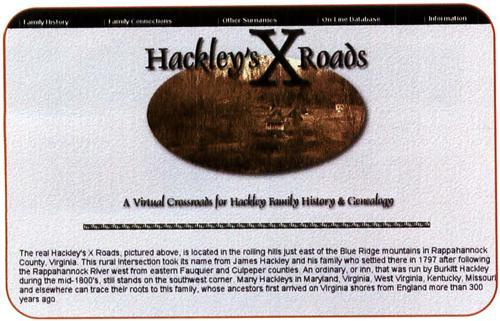
HACKLEY’S X ROADS
<members.cyberrealm.net/rockfish>
Again, bravo for creativity in naming the Web site! The title suggests a theme in which family history research is a journey of discovery. And the subtitle — “a virtual crossroads for Hackley family history and genealogy” — reinforces the idea that visitors have come to the one-stop Web site for Hackley research. The home page adds a brief history of the Hackley family and provides links to other surnames being researched by the Webmaster. Links are well-organized into five main categories.
A title page with a handsome family photograph greets visitors to the Family History page. It’s similar to a book cover, which is a clever idea. Clicking on Preface under the Table of Contents on that page reveals the mission statement, acknowledgements, a list of the Webmaster’s sources and an explanation of the site’s organization. The Hackleys in Early Virginia page gives you a family history, complete with footnotes. Links for the first through sixth generations of Hackleys connect to information about each generation.
The Online Database is a comprehensive collection of family, pedigree, source and descendant pages. You can search each page by clicking on the first letter of the surname. Or view an entire list of alphabetized names for each page category. This kind of organization helps visitors conduct a thorough search.
The Family Connections page features famous Hackley ancestors, including relations such as Stonewall Jackson, Thomas Jefferson and Pocahontas. You can either scroll through and read each profile or click on the menu in the left frame to choose a specific relative.
MCCOLLOCH FAMILY HERITAGE & GENEALOGICAL RESEARCH SITE
McColloch Family Heritage & Genealogical Research Site earns bonus points for being interactive, functional and instructional. The home page has a welcome message, mission statement and explanation of the site’s scope and purpose. First-time visitors are steered to a What’s New page, which outlines new features and has a brief overview of the site’s latest updates. Here, visitors find out how to participate and contribute to family research.
Interactivity abounds. Family members and other friendly family historians can leave brief notes and their e-mail addresses in an online guest book. Forums create a wired community where researchers can discuss genealogy, family heritage, news and events.
Fellow Web-site developers will want to check out DCLinks. This page features reference, genealogy, business and technology sites that provide excellent resources for crafting your own personal Web site.
Scottish researchers of all sorts will find lessons on name origins, coats of arms, tartans and heraldry on the Family Heritage page. Throughout, some of the pages have motivational slogans and “useless” facts that give the site a lighthearted tone and make browsing fun.
MlNERD-MlNER-MlNOR FAMILY WEB SITE
This site’s mission is to reach out to the thousands of long-lost cousins who are part of the Miner-Minor-Minerd family tree. The family’s history goes back about 270 years to Pennsylvania German pioneer ancestors. Today’s Mi nerd-Miner-Minor kin will find an astonishing amount of their history here: At last count, the site contained 98,000 documents and 2,700 photographs representing 1,500 branches of the family.
Content goes far beyond pedigree charts. A Biographies section serves up more than 850 ancestors’ profiles. Honor Roll pays tribute to ancestors who lost their lives in the workplace and during military service. Guests who discover a family connection can consult the Family Archives page, with details about the documents and photographs that cover thousands of branches of the family. The materials aren’t accessible on the Web site; visitors must contact the Webmaster to request copies.
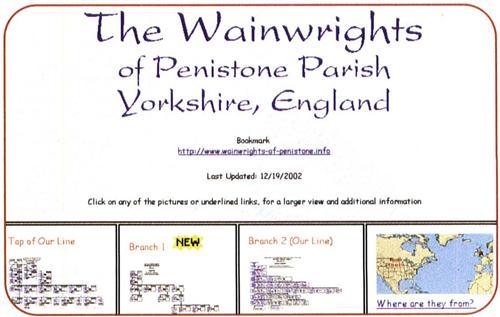
THE WAINWRICHTS OF PENISTONE PARISH YORKSHIRE, ENGLAND
<freepages.genealogy.rootsweb.com/~wewain/Wainwright/Wainwright.htm>
Two tables organize this site’s content, which keeps it from looking cluttered or confusing. The first table is a gateway to information about the Wainwright family. In this section, you’ll find links to pedigree charts for two branches. The first branch includes an ancestor chart for John Wainwright and wife Dorothy. The second branch’s ancestor chart features ancestors of Jeremiah Wainwright and wife Helen. By clicking on Where are they from? you can view detailed maps, as well as photos of Penistone Church, a grammar school and the ancestral village.
An alphabetical index links to a small pedigree chart for specific ancestors. You can view the chart by clicking on the tree, or learn about the Wainwrights’ genealogical records by choosing Documentation. Other handy resources are a timeline of historical facts about England, a glossary of abbreviations and a guide to foreign currency.
The second table on the home page covers related sites. This section would appeal to a broader audience, not just to those with Wainwright relatives. History buffs can read up on Penistone’s railroads or the United Kingdom’s workhouses, for example.

WAYNE COFFEY GENEALOGY
<www.mindspring.com/~wcoffey/coffey/coffey.html (Now Offline)>
Can you say color scheme? Coordinated colors, pleasing page design and quality content make Wayne Coffey Genealogy a winner. The home page’s centered layout makes it easy to assess the resources. Links aren’t scattered haphazardly, and there’s a distinct personal touch. The first stop for visitors should be About This Site. Wayne Coffey, Webmaster, explains the purpose of his online home, outlines the content and provides an e-mail link for those with research-related information.
The attractive table on the home page highlights research compiled on Coffey’s grandfathers and several generations of great-grandfathers. Information on each birth, death, burial, father; mother, spouse, children and marriage is available with just a click of the mouse.

